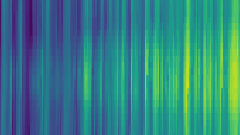Getting started#
Basic Workflow
A small example how tsam can be used is decribed as follows
import pandas as pd
import tsam.timeseriesaggregation as tsam
Read in the time series data set with pandas
raw = pd.read_csv('testdata.csv', index_col = 0)
Initialize an aggregation object and define the number of typical periods, the length of a single period, the aggregation method
aggregation = tsam.TimeSeriesAggregation(raw,
noTypicalPeriods = 8,
hoursPerPeriod = 24,
segmentation = True,
noSegments = 8,
representationMethod = "distributionAndMinMaxRepresentation",
distributionPeriodWise = False
clusterMethod = 'hierarchical'
)
Run the aggregation to typical periods
typPeriods = aggregation.createTypicalPeriods()
Store the results as .csv file
typPeriods.to_csv('typperiods.csv')
Hypertuned aggregation
In case you do not know, which number of segments or typical periods to choose, you should make first a run with the HyperTunedAggregations class. It will find the best combination of typical periods and segments for the aggregation by minimizing the error between the original and the aggregated time series. The following example shows how to use it.
Either create or provide a TimeSeriesAggregation object and use it as base case to get tuned by the HyperTunedAggregations class.
tune_aggregation = tune.HyperTunedAggregations(
tsam.TimeSeriesAggregation(
raw,
hoursPerPeriod=24,
clusterMethod="hierarchical",
representationMethod="distributionRepresentation",
rescaleClusterPeriods=False,
segmentation=True,
)
)
Afterwards, define the aggregation level you want to reach. The following examples shows how to reduce the original time series to 5% of the original data set.
segments, periods, RMSE = tune_aggregation.identifyOptimalSegmentPeriodCombination(
dataReduction=0.05
)
Since, it is quite time consuming, I would recommend to just run it once at the beginning for your time series set, save the resulting segment and period number, and use it as fix values for the original TimeSeriesAggregation object in production.
The scientific documentation of the methodology can be found here: The Pareto-Optimal Temporal Aggregation of Energy System Models
Additional Examples
More detailed examples can be found on the GitHub page of tsam.
